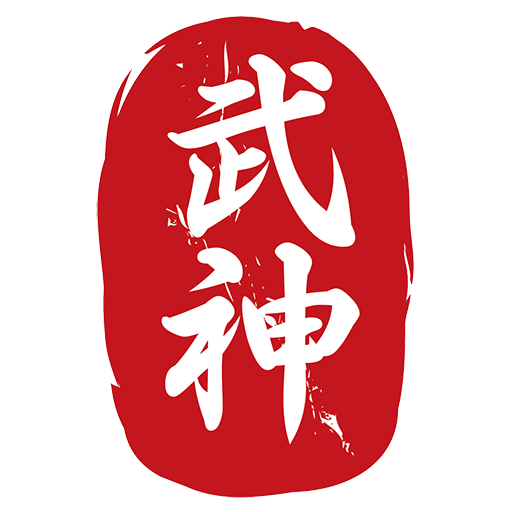The Takagi Yoshin Ryu was once used by the daimyo-bodyguards of the Takagi family to protect their Lord. The Takagi Yoshin Ryu is one of the most complete fighting systems available in the Bujinkan. With 9 different levels, the practioner is drawn to understand the essence of the fight in many aspects.
The history and origins of the Takagi Yoshin Ryu are somewhat confusing as it combines the influences of several schools and, in the course of time, was also split up into several directions and renamed many times.In 1569 during the Yeiroku era (1568-1579) in the Funagata Yama (mountain area) of Miyagi, there was a Chinese mountain priest from the Abe family called Unryu (Cloud Dragon), who was an expert in the shuriken, bojutsu, yari, naginata and taijutsu from the Amatsu Tatara Rinpo Hiden Makimono. The Amatsu Tatara scroll was kept by the Abe-, Nakatomi-, Otomo-, and Monobe-families (Takamatsu Sensei’s family and the Kuki family also possessed a copy). The Dai Nippon Bugei Ryu-Ha gives Unryu’s name as Sounryu. He was a wandering Taoist monk, living in Rikuzen Funagawa, not far from Sanroku Mountain. Some historians have said that Unryu came from Hieizaenji Yama in Kyoto. He studied Sessho hiden no jutsu, a system that uses the yari. The Sessho hiden no jutsu is also known as the Juppo sessho no jutsu. Unryu taught this system with the yari to a samurai from Katakura Kojuro (in Fukushima province) named Ito Ki-i Morisatada (also called Ito Sukesada). Ito was a famous martial artist of that time (1570’s) and the founder of the Itto Ryu Kenko Ryu.
A few generations later, Oriemon Shigenobu Takagi (1625-1711) arrived at the school. Shigenobu revised the techniques already learned and in honour of his father, he named them Takagi Yoshin Ryu. Translated, the family name means something like “tall tree”. The Yoshin style can be described using the terms “willow heart” or “willow spirit” for feeling, bending oneself, giving in to the pressure. Another interpretation of the characters could be “soaring/noble heart”. Shigenobu and his son Takagi Oriemon Shigetoshi added techniques from the Sumo as well as the Jujutsu school Takauschi Ryu and created a new jutaijutsu system that was made up of twelve Omote waza (basic techniques) strategies, twenty-four Ura waza (counter techniques) strategies and twelve Sabaki waza (movement techniques) strategies. Shigenobu arranged several fights against the Yagyu Ryu, the sword combat school of the Tokugawa Shogunate, and remained successful. During this time – the Takagi Yoshin Ryu was probably also including the Mutodori Gata and the the Daisho Sabaki Gata.
At the beginning of the 18th century, the Soke Takagi Gennoshin Hideshige invited an expert of the Kukishin Ryu Called Okuni Kihei Shigenobu to stay with him and teach his system of the Takagi Yoshin Ryu. The two soke exchanged knowledge and experienced and adapted both Ryu accordingly. As Gennoshin lay on his deathbed, he asked Okuni if he would continue the original teachings in the two new styles that they had worked on together to create and for about two hundred years thereafter, both schools followed the same Soke line.
During the 20th century – however – the situation arose that several scholers of one teacher were named Soke. The schools are completely identical, but simply run under different names.
The transmission of the Takagi Yoshin ryu scrolls from Takamatsu Toshisugu, to Hatsumi Masaaki, took place on a day in the 5th month showa 33 (May 1959).
Takagi Yoshin Ryu Soke Lineage
- Takagi Orluemon Shingenobu
- Takagi umannoskuke Shigesada
- Takagi Gennoshin Hideshige
- Ohkuni Kihei Shigenobu
- Ohkuni Yakuburo Nobutoshi
- Ohkuni Tarodayu Tadanobu
- Ohkuni Kihei (Kihyoe) Yoshisada
- Ohkuni Takezaemon Hidenobu
- Nakayama Jinnai Sadahide
- Ohkuni Kamaharu Hidetoshi
- Nakayama Kaemon Sadasaka
- Ohkuni Kamaharu Hidetoshi
- Yagi Ikugoro Hisayashi
- Fujita Fujigoro Hisayoshi
- Mizuta Yoshitaro Tadafusa
- Takamatsu Toshitsugu Uoh
- Masaaki Hatsumi
